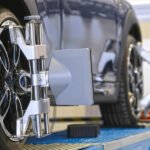

A Guide to Extending the Lifespan of Your Car’s Shocks and Suspension
Your car’s suspension is a complex system that plays a crucial role in providing a smooth and controlled ride. Comprising various components working in harmony, the suspension is responsible for maintaining tire contact with the road surface, ensuring stability, and absorbing shocks from uneven terrain. Understanding and maintaining this system is vital for a comfortable and safe driving experience.
Shocks: The Unsung Heroes of Suspension:
At the heart of your car’s suspension are the shocks, also known as shock absorbers. Contrary to their name, shocks don’t absorb shocks but rather control the oscillations of the springs, preventing the car from bouncing uncontrollably. Shocks play a pivotal role in maintaining tire contact with the road, ensuring optimal handling, and enhancing overall ride comfort.
Components Assisting Shocks: The Suspension Ensemble:
Working alongside shocks are several components that contribute to the suspension system’s effectiveness. Springs, struts, and control arms work in tandem to distribute the forces encountered during driving. Springs absorb energy from bumps, while struts and control arms provide structural support and help manage the vehicle’s alignment.
Factors Contributing to Wear and Tear:
Like any other car component, shocks and the suspension system are subject to wear and tear over time. Factors contributing to their degradation include road conditions, driving habits, vehicle load, and exposure to harsh elements. Potholes, rough roads, and aggressive driving can accelerate the wear of these components.
Preserving the Suspension Lifespan:
- Regular Inspections: Schedule routine inspections to check for signs of wear, leakage, or damage in the shocks, struts, and other suspension components.
- Alignment Checks: Ensure proper wheel alignment to prevent uneven tire wear and reduce stress on the suspension.
- Balanced Loading: Distribute weight evenly in the car to prevent excess strain on one side of the suspension.
- Mindful Driving: Avoid aggressive driving, especially over bumps and potholes, as it can put unnecessary stress on the suspension.
- Timely Repairs: Address any issues promptly. Delaying repairs can lead to further damage, affecting both the suspension system and other components.
Conclusion:
Your car’s suspension is a silent champion, working diligently to provide a comfortable and secure ride. By understanding the role of shocks and the interconnected components, and by adopting proactive maintenance practices, you can significantly extend the lifespan of your car’s suspension. Regular care not only ensures a smoother driving experience but also contributes to the overall longevity and performance of your vehicle. So, let your suspension glide smoothly through the miles, and your car will thank you with many more trouble-free journeys.
Add a comment Cancel reply
Categories
- Car Gadgets (17)
- Car News (33)
- Car Reviews (43)
- Car Wars (7)
- Mechanicals (32)
- Uncategorized (2)
Recent Posts
About us

Popular Tags
Related posts


Essential Car Repair Skills Every Driver Should Know

All About Wheel Balancing








